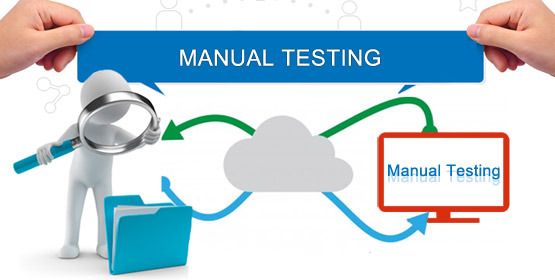When it comes to software testing, automated testing and manual testing are the two methods of software testing and both of them are crucial for software development. For the manual testing, tester has to sit in front of screens and go through the them. In contrast, automated testing is much more effective for tester as test cases are executed automatically by using tool/software. So what is the difference between Automated and Manual Testing?
First off both of them have their own benefits and disadvantages. It can depend on many factors like budget, timeline and human recourse,… You could choose the right type of testing to archive your goals.
Automated testing is a process that makes use of automation testing tools to execute pre-scripted tests on applications, then compares the test results to the expected behaviour and reports it to the testers. In addition, Automation testing tools also have the Record and Playback features which help you to record all your testing activities. Basically, Automation testing tools repeat the predefined actions then compare the results to the predicted behaviour. If the outcome and the expected results align, your product is working as it’s supposed to do.
Manual testing is a process of finding out the defects or bugs in a software program. In this way, tester will simulate the role of end user to go through all the features all the application to make sure that they are working as they are supposed to work. All will be done manually so it is time consuming and laborious.

MANUAL TESTING
- Manual testing is time-consuming due to running test cases as everything is done manually.
- Tester can observe the application during testing, making the user-friendliness better.
- Less expensive in the short-term.
- Low accuracy result.
- Less reliable.
- Programming is not required
- Regression testing is time-consuming and laborious.
- The same amount of time is required to executed the test cases.

AUTOMATED TESTING
- Automated testing is much faster than manual testing due to using software.
- Less UI feedback.
- It could be costly initially, but in the long-term, it will reduce the cost.
- High accuracy result.
- More reliable.
- Programming is required.
- Regression testing is easy due to using tools.
- Once the test suites are made, it requires fewer tester to execute test cases.
WHEN TO USE MANUAL TESTING?
- Exploratory Testing: This type of testing requires the tester’s knowledge, experience, analytical/logical skills, creativity, and intuition. The test is characterized here by poorly written specification documentation, and/or a short time for execution. We need the human skills to execute the testing process in this scenario.
- Usability Testing: This is an area in which you need to measure how user-friendly, efficient, or convenient the software or product is for the end users. Here, human observation is the most important factor, so a manual approach is preferable.
- Ad-hoc Testing: In this scenario, there is no specific approach. It is a totally unplanned method of testing where the understanding and insight of the tester is the only important factor.
WHEN TO USE AUTOMATED TESTING?
- Data Driven Testing: For testing application functions where the same functions need to be validated with lots of different inputs & large data sets (i.e. login, search).
- Load & Performance Testing: No viable manual alternative exists.
- Regression Testing: Here, automated testing is suitable because of frequent code changes and the ability to run the regressions in a timely manner.
- Load Testing: Automated testing is also the best way to complete the testing efficiently when it comes to load testing. Learn more about load testing with our best practices guide here.
- Repeated Execution: Testing which requires the repeated execution of a task is best automated.
- Performance Testing: Similarly, testing which requires the simulation of thousands of concurrent users requires automation.
Understand advantages and disadvantages of each type of testing, you will know when to use manual testing and when to use automated testing. Using the right method for each testing situation will save your time and give you best results.
